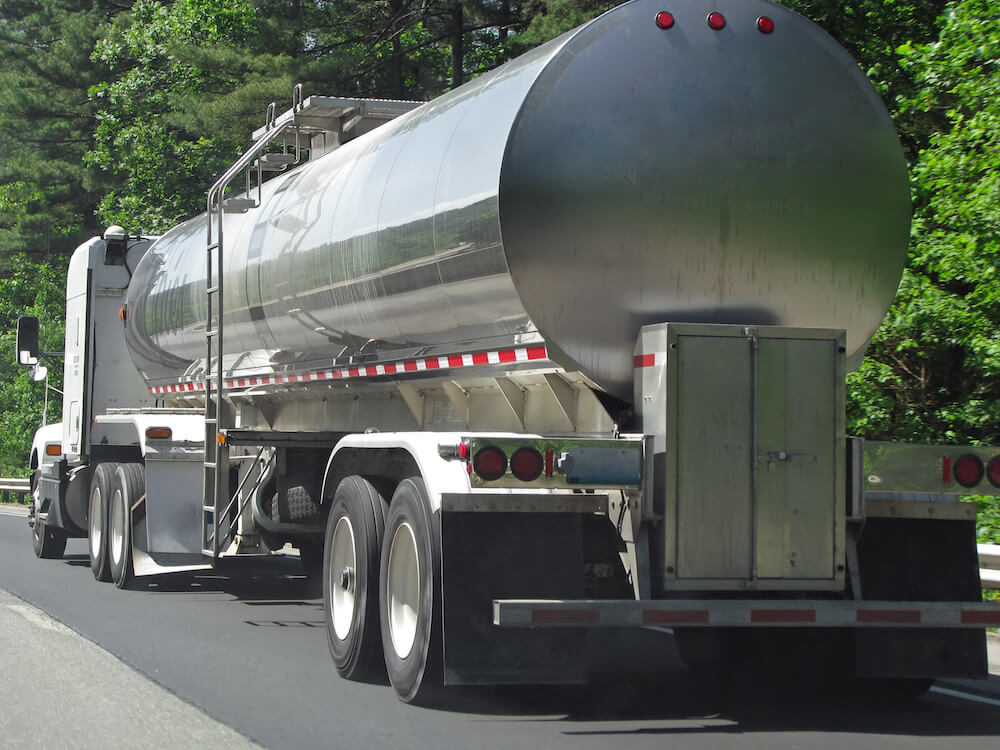The Federal Motor Carrier Safety Administration (FMCSA) requires commercial drivers who transport certain types of materials to apply for and maintain a hazardous materials safety permit (HMSP). Drivers and motor carriers can refer to 49 CFR 385.403 to find further information about hazardous materials and to ensure they understand FMCSA expectations in this manner.
Types of materials that require a HMSP.
According to a brochure published by the FMCSA in September 2017, you must obtain a HMSP if you routinely transport any of these materials:
- Explosives: This includes 25 or more pounds of material listed under Division 1.1, 1.2, or 1.3. It also refers to any amount of explosives described in Division 1.5 that requires a hazardous materials placard.
- Methane: Methane, which can include refrigerated or compressed liquid, natural gas, or other refrigerated or compressed liquefied gas with a methane content above 85 percent requires a HMSP. However, this only applies to liquids in bulk packaging with a capacity of 3,500 pounds or more.
- Radioactive Materials: This category includes Class 7 materials in a highway route-controlled quantity.
- Toxic by Inhalation Materials in Hazard Zones A through D, all of which drivers and motor carriers can learn more about in 49 CFR 385.403 of FMCSA regulations.
Steps to apply for an HMSP.
You must use the FMCSA Unified Registration System (URS) if applying for an HMSP for the first time. Applicants should navigate to the FMCSA website, find the Registration tab, and follow the on-screen instructions after clicking on the Start Here tab. Those updating or renewing their HMSP should complete Form MCS-150B titled Combined Motor Carrier Identification Report and HMSP application available on the FMCSA website. Applicants must also submit proof of insurance when applying for, updating, or renewing an HMSP using Form MCS-90.
How to keep your HMSP in good standing.
Once the FMCSA issues the Hazardous Materials Safety Permit, it continues to monitor carriers for compliance. They must meet these requirements to maintain the permit:
- Have a satisfactory or higher safety rating.
- Score in the top 70 percent of carriers for vehicle, drivers, out of service rating, and hazardous materials in the Motor Carrier Management Information System (MCMIS).
- Conduct a pre-trip inspection for shipments containing Class 7 materials.
- Develop a communication system that makes it possible for the driver to contact the motor carrier while transporting the hazardous materials.
- Create an adequate security system.
- Register and maintain registration with the Pipeline and Hazardous Materials Safety Administration (PHMSA).
- Create a written route plan for any drivers transporting radioactive or explosive materials.
Besides enforcing these requirements, the FMCSA manages programs to issue temporary safety permits, revoke or suspend a safety permit, and for motor carriers to appeal the suspension or revocation of a safety permit.
Make sure you’re prepared with the right insurance information.
It’s really important to protect your trucking business with the right insurance – you have to make sure that you’re properly covered. Our team of transportation insurance agents can help you get the coverage you need for your specific business. Get started with your truck insurance quotes by filling out our online form, giving us a call, or messaging us on LiveChat.
Sources:



